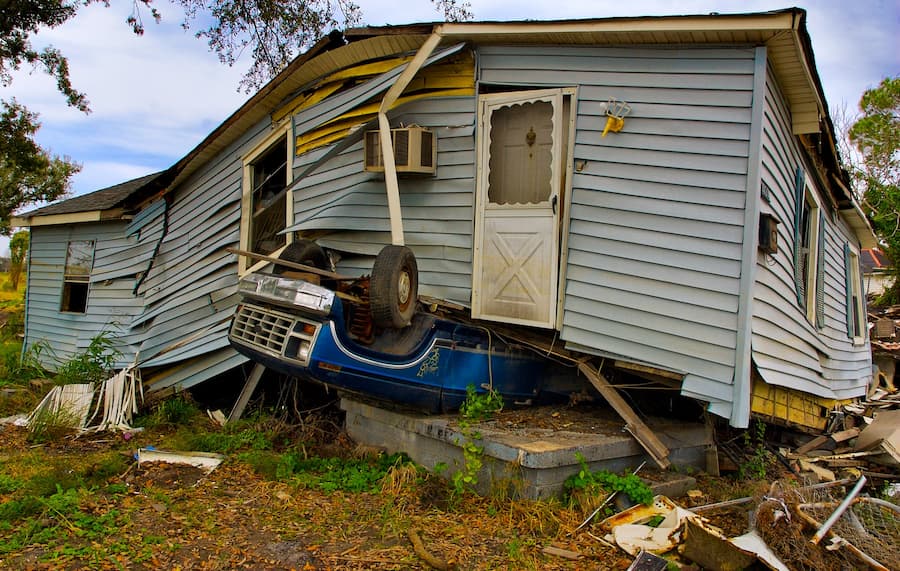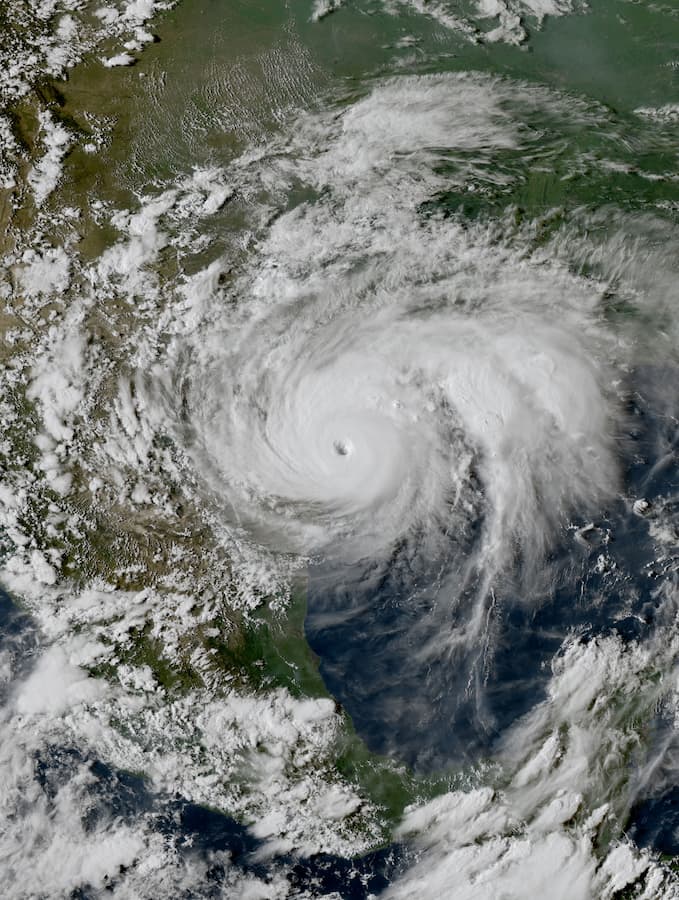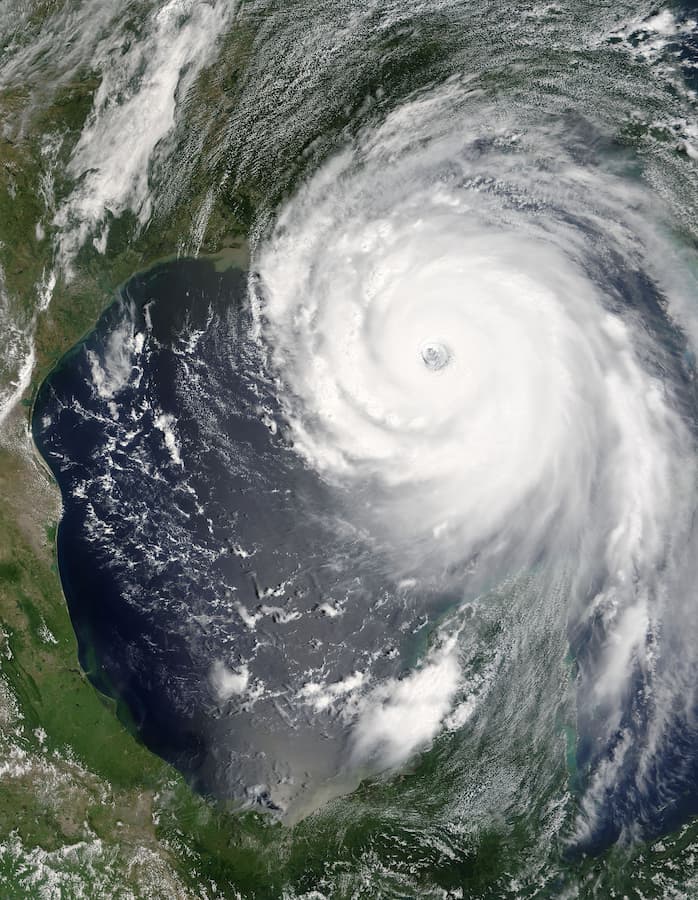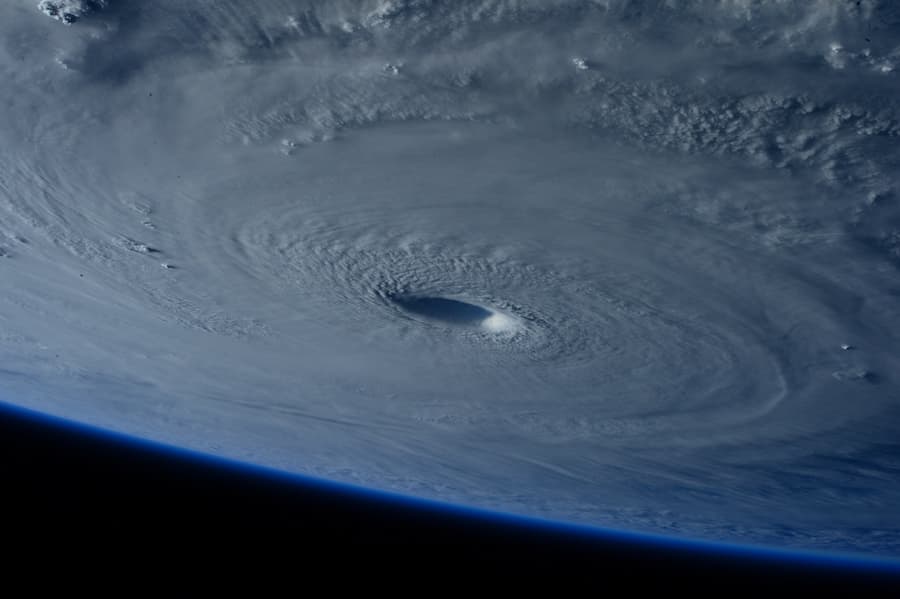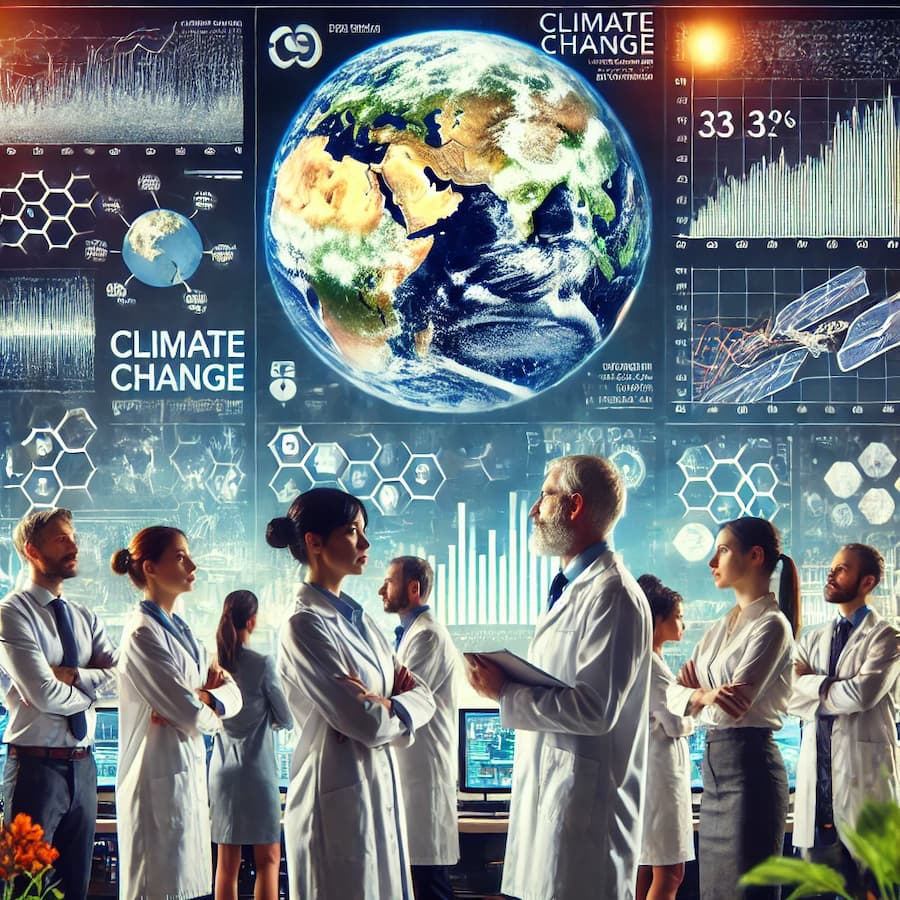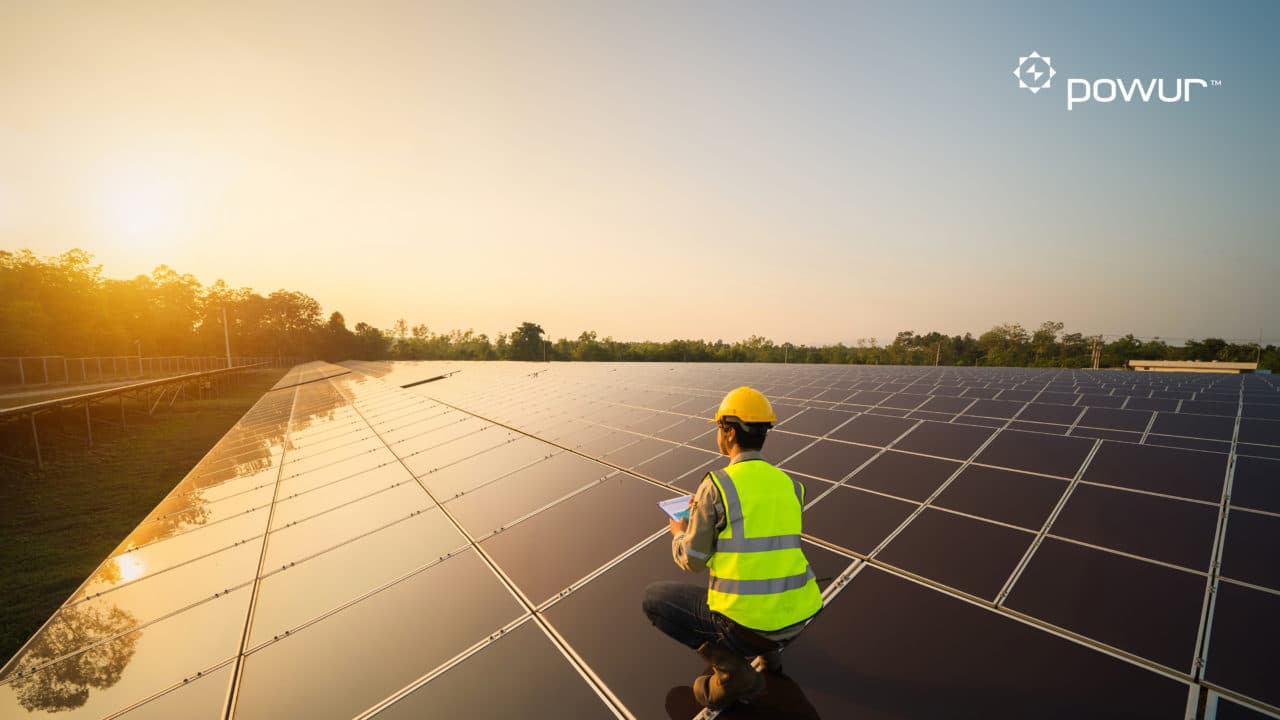How Climate Change Affects Hurricanes: Understanding the Intensifying Storms
Many people wonder how climate change affects hurricanes. There is a strong link between the two.
Hurricanes or tropical cyclones are one of the world’s costliest and most destructive natural climate disasters destroying communities and resulting in huge economic losses.
Scientific Studies on how Climate Change Affects Hurricanes
A study published recently provides evidence linking human-induced global warming to an increase in the severity of these extreme weather events (Source).
Hence, there is in fact a lot of scientific data that shows how climate change affects hurricanes.
“We’ve just increased our confidence of our understanding of the link between hurricane intensity and climate change,” James Kossin, the lead author of this new study and a researcher with NOAA and the University of Wisconsin told Washington Post (Source).
Researchers found that storms are becoming stronger and wetter, and hurricanes are growing more severe in their intensity. “We have a significantly building body of evidence that these storms have already changed in very substantial ways, and all of them are dangerous,” Kossin adds (Source).
In 2018, NOAA’s National Centers for Environmental Information (NCEI), in consultation with the National Hurricane Center (NHC), published a report containing an updated list of costliest tropical cyclones. “For all United States hurricanes, Katrina (2005) is the costliest storm on record. Hurricane Harvey (2017) ranks second, Hurricane Maria (2017) ranks third, Hurricane Sandy (2012) ranks fourth and Hurricane Irma (2017) ranks fifth” (Source).
Hurricanes Harvey, Irma and Maria (2017)
The 2017 Atlantic hurricane season was exceptionally bad, which witnessed three of the five costliest hurricanes in US history (Source).
“Harvey broke the record for most rainfall from a tropical cyclone in the US, with more than 60 inches of rain falling at two measuring stations in Southeast Texas” (Source).
The Guardian reports, “Hurricane Harvey was Texas’s most deadly in a century, killing 68” (Source).
Within a month of hurricane Harvey, Irma and Maria followed, affecting Florida, Puerto Rico, and a large part of the Caribbean (Source).
Hurricane Irma made “landfall in Florida on September 10, 2017, as a Category 4 hurricane”. This intense Atlantic hurricane resulted in 129 deaths in Florida, Georgia, and North Carolina. “Wind damage compromised power lines, and a storm surge caused extensive flooding, primarily along the coast” (Source).
Less than two weeks after Irma, Hurricane Maria pummeled numerous islands in the Caribbean, levelling cities with winds as high as 150-mph. For almost a year, Puerto Rico authorities underreported the death toll at 64, when in reality, the toll was as high as 2975. It caused around 90 billion dollars in damages “and left households for, on average, 84 days without electricity; 64 days without water and 41 days without cellular telephone coverage” (Source).
Hurricane Sandy (2012)
Hurricane Sandy struck the United States on a late evening in October, flooding the streets and knocking down power lines. “In the nine days that Sandy raged, it killed 70 people in the Caribbean and almost 150 people in the U.S.” (Source).
Federal Emergency Management Agency (FEMA) estimates hurricane Sandy affected 24 U.S. states and the entire eastern seaboard, causing $70.2 billion in damages (Source).
Scientists have reported that in the case of Hurricane Sandy, warm waters made the situation worse. "It is possible that subways and tunnels may not have been flooded without the warming-induced increases in sea level and storm intensity and size. Putting the potential price tag of human climate change on this storm in the tens of billions of dollars" (Source).
"The climate is changing: we have a new normal. The environment in which all weather events occur is not what it used to be. All storms, without exception, are different. Even if most of them look just like the ones we used to have, they are not the same" (Source).
According to the website Skeptical Science, "There are several ways in which human-caused global warming contributed to the damage caused by Hurricane Sandy - by causing higher sea levels (bigger storm surges and flooding), warmer oceans (a stronger hurricane), and more moisture in the air (more flooding)" (Source).
Hurricane Katrina (2005)
Hurricane Katrina was massive and is the most devastating hurricane in terms of damages caused in recorded history. This category 3 hurricane resulted in 1833 deaths (Source).
Economic losses from Katrina are estimated to be more than $160 billion, which makes it the costliest hurricane in history. The winds peaking at 170-mph overwhelmed cities with 10 inches of rain in the storm surge. This makes it the costliest hurricane in history (Source).
How Climate Change Affects Hurricane Intensity?
The intensity and the devastation unleashed by hurricanes are becoming stronger worldwide, and climate change is a key contributor to making these disasters deadlier than ever before.
The science behind the hurricanes suggests that a warmer world would result in a higher intensity of hurricanes because of warmer water, which fuels these storms with more energy. Center for Climate and Energy Solutions has directly linked warmer surface sea temperature to stormwind speeds causing more devastation in their reach (Source).
The NOAA suggests that there is likely going to be an increase in category 4 and category 5 hurricanes, and hurricane wind speeds could increase by up to 10 percent. Also, warmer sea temperatures will cause hurricanes to become wetter, with an increase of 10-15 percent in precipitation from cyclones projected in a 2 degree Celsius scenario (Source).
The rise in global average temperature continues, which increases the threat from these tropical storms. The only remedy to this devastating situation is rapid decarbonization. However, the task of limiting emissions is daunting, and the current trends show no respite from the increasing greenhouse gases in the atmosphere. This trend is likely to continue in the future unless drastic measures are put in place, and transition to net-zero carbon emissions happens earlier than envisioned.
We should do what we can to spread awareness about climate change and hurricanes.
Further Reading and Sources
- Proceedings of the National Academy of Sciences
- Washington Post
- NOAA - National Hurricane Center
- BBC News UK
- Center for Disease Control & Prevention
- The Guardian Article on Hurricane Harvey
- The Guardian Article on Hurricane Sandy
- National Geographic
- Business Insider
- CNN Library – Hurricane Season 2017
- CNN Library – Hurricane Sandy
- CNN Library – Hurricane Katrina
- Britannica
- Center for Climate and Energy Solutions
- Skeptical Science

Join the Community and Newsletter (5000 Subscribers)
You can subscribe to my Substack Page or see the archives of previous posts. More great content coming soon!
Go Solar!
If you live in the United States and want to go solar, now is your chance! Visit Powur
Also, more importantly, you could become an ambassador for Powur and earn $1000 per successful referral. This is a fantastic opportunity to help the environment by helping your bottom line.
You even have the opportunity to become a solar professional, which takes it a step further. Do this if you want to really work in the solar industry. After going through a training, you can earn on average between $2000 to $4000 USD per panel installed. You don't have to be an American to be a solar professional for Powur, but it makes it a lot easier.
Recent Articles
-
Climate Change Quotes by Scientists Around the World
Aug 24, 24 02:01 PM
Explore impactful climate change quotes by scientists. Discover the wisdom and insights of experts advocating for a sustainable future. -
The Blueprint for a Smart and More Sustainable Home
Aug 21, 24 09:57 AM
These days, the concept of “home” has evolved to encompass more than just a physical space, reflecting one’s values, as well. As concerns over environmental -
Green Steps: Practical Measures for Overcoming Climate Change Anxiety
Aug 01, 24 12:46 PM
Climate anxiety affects many people today, and taking definitive action can soothe these concerns while positively impacting the world. By educating yourself -
8 Steps to Launching a Green Building Business
Jul 10, 24 09:13 PM
Have you been thinking about starting your own green building business? If so, you’ve come to the right place. In this blog post, we’ll go over everything
Powur - Solar Power at your Fingertips
Earn $1000 per referral by becoming an ambassador for Powur, a great solar power company in the United States.
If you become an ambassador for solar power, you have three incredible incentives:
- Help yourself by earning $1000 each time you successfully refer someone to solar
- Help create a better world for the next generation
- Help fund the Climate Change Guide, which will continue to spread awareness about climate change. We have been spreading awareness since 2011 to millions of people from nearly 200 countries.
Moreover, you can become a solar professional like me by joining Powur. Take your Powur back!

